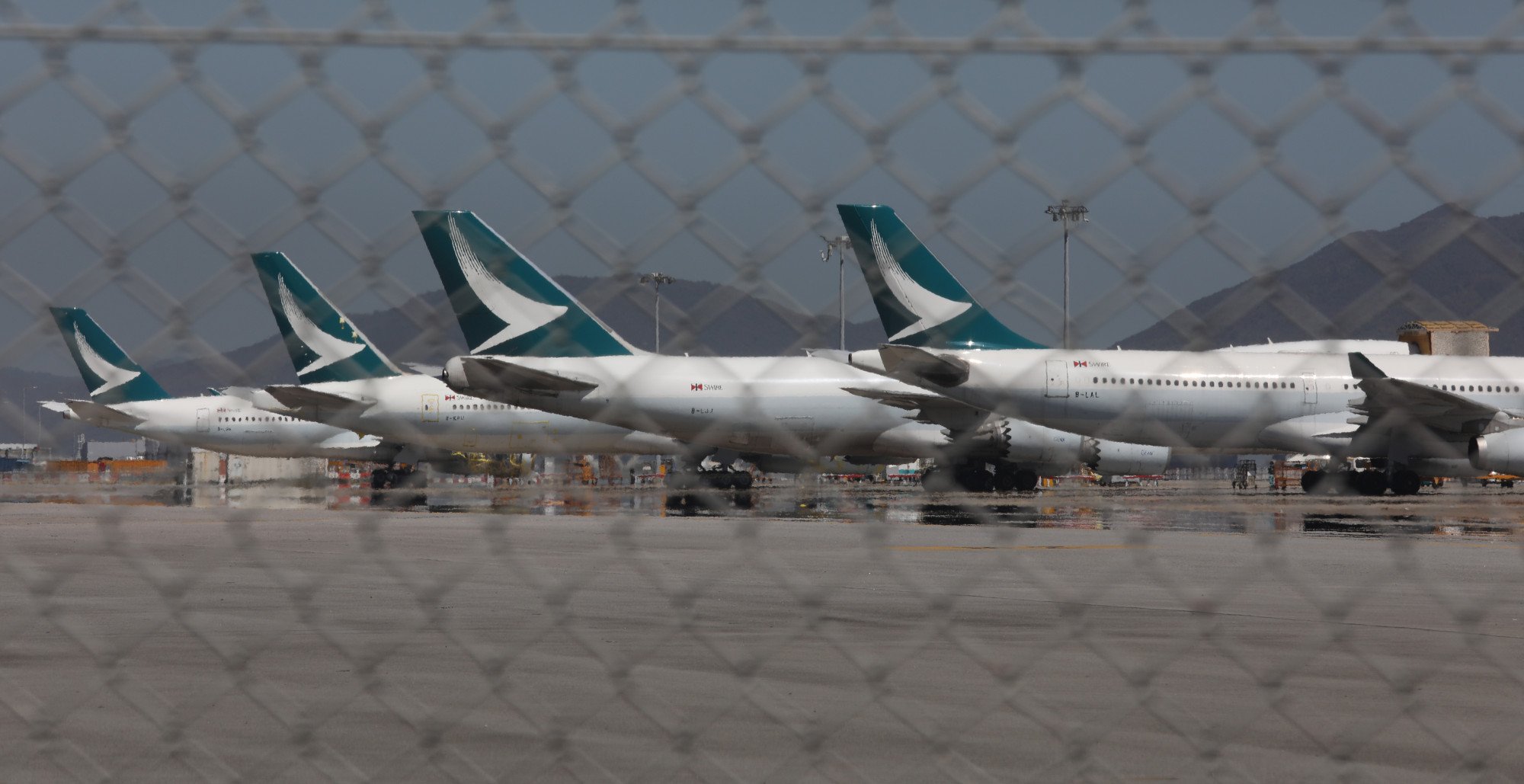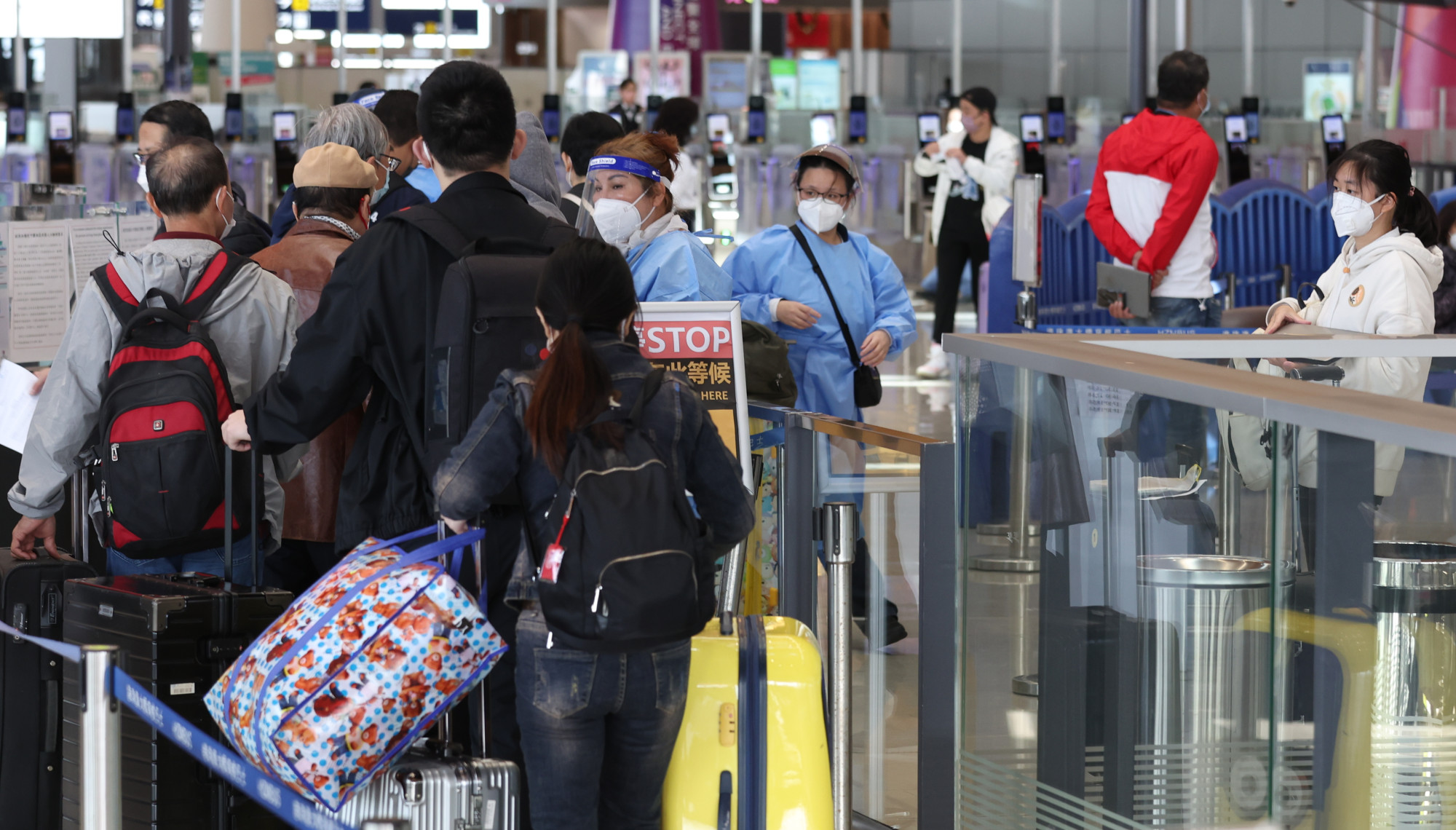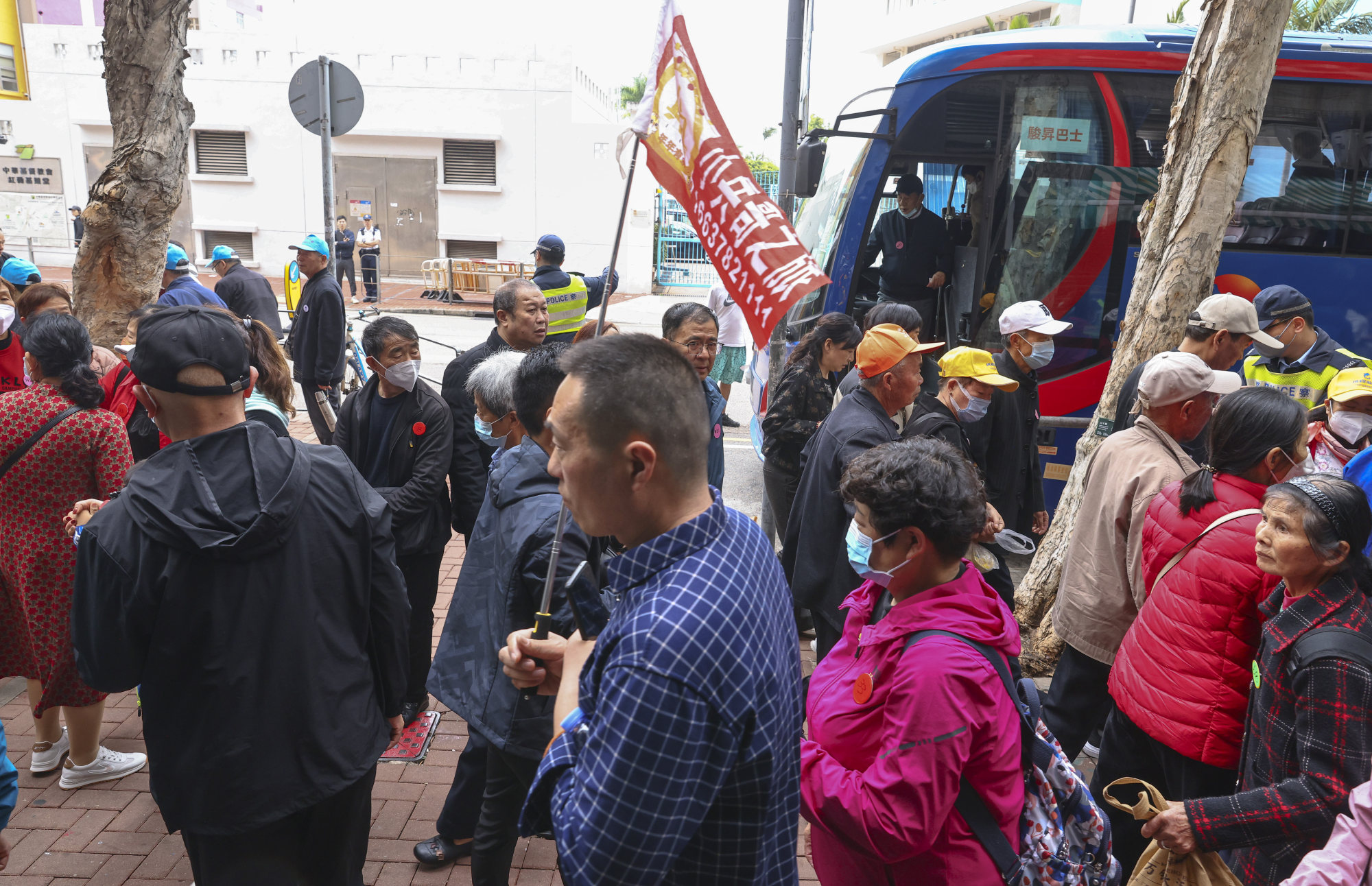
Hong Kong borders are open, so why aren’t mainland Chinese visitors flying in? Airlines slow to increase flights, airport facing staff crunch
- So far, most mainland tourists have been arriving by ferry, coach or high-speed rail from Greater Bay Area
- Airlines need time to get planes back in service, ramp up manpower and training, arrange ground services
Hong Kong International Airport’s labour woes and the slow recovery of flights are being blamed for the low number of mainland Chinese visitors from beyond the Greater Bay Area since borders opened fully in February.
So far, most mainlanders have been arriving by ferry, coach or high-speed rail.
For those in the travel industry, the big question is how quickly airlines can restore services and meet mainland demand.

Tommy Tam Kwong-shun, chairman of the Society of IATA Passenger Agents, said the recovery of air travel between Hong Kong and the mainland had been below expectations so far.
“One important factor is that ground-handling services at our airport can only be provided on a very small scale now due to insufficient staff,” he said.

Some passengers were flying to Shenzhen or even Guangzhou and then using other forms of transport, such as coach or high-speed rail, to travel to Hong Kong, he added.
Although Hong Kong had removed most travel curbs last December, scrapping daily quotas and test requirements for visitors, airlines remained slow to resume flights to mainland destinations.
It was only from March 15 that China resumed issuing all types of visas to foreigners, effectively dropping the last major border control measure under strict anti-Covid policies.
Lack of flights hampering Hong Kong tourism industry’s recovery, experts say
That explained the hesitancy of airlines to add flights to the mainland while demand was unclear, according to the International Air Transport Association (IATA), a trade group for airlines.
“Airlines need time to get aircraft back into service from long-term parking, ramp up manpower, resources and training, and manage passenger handling contracts and arrangements,” said Xie Xingquan, the association’s regional vice-president for North Asia.
Joanna Lu, head of consultancy for Asia at Ascend by Cirium, said inbound traffic from the mainland was critical not only for Hong Kong, but also for the whole Asia-Pacific region, given the country’s massive outbound travel market.
“It’s critical for Hong Kong to connect this part of traffic demand with the rest of the world and resume its hub function,” she said.

In March, mainland arrivals accounted for about four-fifths of all visitors to Hong Kong, with an average of 63,000 daily.
In 2019, before the pandemic, there were about 150,000 mainland visitors each day. They accounted for almost four-fifths of the city’s 56 million visitors that year.
Hong Kong is expecting its first big wave of mainland visitors in the first week of April, with the Ching Ming Festival on Wednesday and Easter weekend from April 7 to 10, the first long holidays since cross-border travel was restored completely.
The Immigration Department has forecast that more than four-fifths of more than 9 million estimated arrivals would enter and leave Hong Kong through land boundary control points.
Call to cap mainland Chinese budget tours to Hong Kong criticised as step too far
Hong Kong flag carrier Cathay Pacific and its budget arm HK Express expects to operate at half their overall pre-pandemic passenger capacity by the end of March and are aiming to hit 70 per cent by year’s end.
Cathay operated more than 110 return flights per week to 15 mainland cities last month, including resuming services to Shanghai Hongqiao airport and Haikou.
Its seat capacity to the mainland has improved continuously since last July but was still only about two-thirds of 2019 levels, according to Cirium.
The top five mainland destinations from Hong Kong were Shanghai Pudong International Airport, Beijing, Hangzhou, Xiamen and Chengdu, it said, but seat capacity last month was down between 40 and 78 per cent across the airports compared with 2019.
There were flights last month between Hong Kong and 21 mainland destinations, against 44 destinations in March 2019, according to Cirium.

Air China restored more than two-fifths of flights to the mainland, China Eastern restored almost three-fifths and China Southern over half, compared with March 2019.
In the region, Singapore recovered relatively faster after the city state removed its Covid-19 restrictions a year ago. There were flights between Changi Airport and 19 mainland destinations in March 2023, compared with 30 in March 2019.
More coupons, discounts in HK$20 million injection to Hong Kong tourism drive
China was Singapore’s largest source of inbound travellers before the pandemic, accounting for almost a fifth of its total visitors by air in 2019, according to independent aviation analyst Brendan Sobie.
By last month, Singapore Airlines Group had restored about 40 per cent of the flights it operated to China in March 2019.
Kenny Sham Ho-ki, general manager of Hong Kong travel booking platform Klook, said the slow recovery of flights had affected the revival of the tourism industry.
“Because there is a cap on flights, there is a cap on the number of travellers booking our attractions, hotels, and so on,” he said.
The desire of mainlanders to travel has been clear, as the platform saw a spike in mainland users’ air ticket bookings to Hong Kong from January to March this year compared with the last three months of last year.
So far, however, many of the visitors were not from beyond the bay area because of the lack of flights. Besides, for mainlanders in the northern part of the country, the priority was travelling to Japan and Europe, Sham said.

